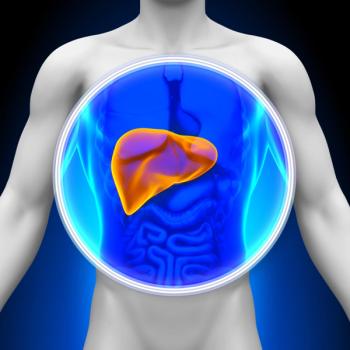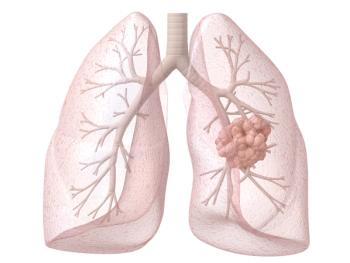
Investigators Identify Significant Racial Disparities in Surgical Care for Cancers of the GI Tract
Black patients were reported to be significantly less likely to receive standard of care surgical treatment for cancer of the gastrointestinal tract compared with White patients.
Significant racial disparities have been identified in surgical care for cancers of gastrointestinal (GI) tract, with investigators reporting that Black patients were less likely to receive standard care compared with White patients, according to data published in JAMA Network Open.1
Although longer median survival was associated with both negative surgical resection margins (87.3 months vs 22.9 months; P <.001) and adequate lymphadenectomies (80.7 months vs 57.6 months P <.001), Black patients were less likely to have negative surgical margins overall (odds ratio [OR], 0.96; 95% CI, 0.93-0.98), and after esophagectomy (OR, 0.71; 95% CI, 0.58-0.87), proctectomy (OR, 0.71; 95% CI, 0.66-0.76), or biliary resection (OR, 0.75; 95% CI, 0.61-0.91) vs White patients. Additionally, Black patients vs White patients were less likely to undergo adequate lymphadenectomy both overall (OR, 0.89; 95% CI, 0.87-0.91) and with regard to colectomy (OR, 0.89; 95% CI, 0.87-0.92), esophagectomy (OR, 0.72; 95% CI, 0.63-0.83), pancreatectomy (OR, 0.90; 95% CI, 0.85-0.96), proctectomy (OR, 0.93; 95% CI, 0.88-0.98), proctocolectomy (OR, 0.90; 95% CI, 0.81-1.00), and enterectomy (OR, 0.71; 95% CI, 0.65-0.79).
No receipt of either adjuvant chemotherapy or radiotherapy due to comorbidities was more likely in Black vs White patients, with increased rates of 15% (OR, 1.15; 95% CI, 1.10-1.21) and 49% (OR, 1.49; 95% CI, 1.35-1.64), respectively. In addition, Black patients were more likely to have recommended adjuvant chemotherapy (OR, 1.68; 95% CI, 1.55-1.82) or radiotherapy (OR, 2.18; 95% CI, 1.97-2.41) omitted from their treatment plan due to unknown reasons.
“Further research should probe both system- and physician-level drivers of disparities within cancer care and address places of bias that allow for this inequitable treatment of African American and American Indian patients. We are currently performing a deeper look into our striking study findings, and our areas of focus are means of communication, education, socio-economic factors, healthcare system workflows, and differences in cancer biology which exist by race and ethnicity,” senior author Sajid Khan, MD, FACS, FSSO, who is also associate professor of surgery (Oncology) and section chief of Hepato-Pancreato-Biliary (HPB) and Mixed Tumors at Yale Cancer Center, said in a press release.2
Investigators pulled data from the National Cancer Database 2017 Participant Use File to conduct a cohort study. Patients included adults aged 18 years or older who had been diagnosed with a malignant neoplasm of the GI tract from January 2004 to December 2017. To be included in the analysis, patients needed to undergo surgical resection of the primary disease site. Those who were missing demographic and clinical data or who had an unknown surgery type or local tumor destruction were excluded from the research.
The data analysis took place from June 2021 to December 2021 and primarily focused on differences between Black and White patients due to historical discrepancies in disease burden and survival between the 2 groups. Investigators reported that 565,124 patients met the inclusion criteria for the study. The majority of patients were male (54.7%), White (83.5%), and non-Hispanic (90.3%). Additionally, the most common primary disease site was the colon (44.9%), and patients commonly ranged in age from 60 to 69 years (28.5%). In total, 88.5% of patients achieved negative surgical margins and 71.2% underwent adequate lymphadenectomy.
Additional findings from the study indicated that achieving negative surgical margins were 29% more likely in gallbladder cancer and 29% less likely following esophagectomy in Black compared with White patients. Black patients were also 25% and 29% less likely to have negative margins in other biliary site resections and for proctectomies, respectively. Black patients were also 6% and 29% less likely to have adequate lymphadenectomy for gastrectomy and enterectomy, respectively.
In terms of receiving adjuvant chemotherapy and radiotherapy overall, unadjusted analysis showed that Black patients were 8% and 35% less to undergo treatment than White patients. Recommendation of adjuvant therapy for Black patients was also more commonly omitted in terms of adjuvant chemotherapy (OR, 1.15; 95% CI, 1.12-1.19) or radiotherapy (OR, 1.48; 95% CI, 1.40-1.58).
References
- Bakkila BF, Kerekes D, Nunez-Smith M, et al. Evaluation of racial disparities in quality of care for patients with gastrointestinal tract cancer treated with surgery. JAMA Netw Open. 2022;5(4):e225664. doi:10.1001/jamanetworkopen.2022.5664
- Yale Cancer Center study reports racial disparities for gastrointestinal surgery. News release. Yale Cancer Center. April 4, 2022. Accessed April 5, 2022. https://bit.ly/3j9Dvrj
Newsletter
Stay up to date on recent advances in the multidisciplinary approach to cancer.
































































































